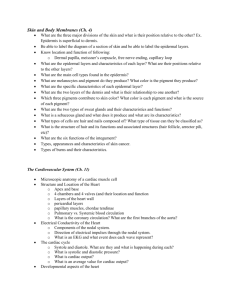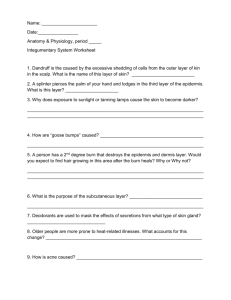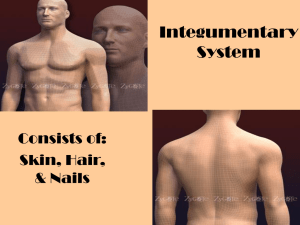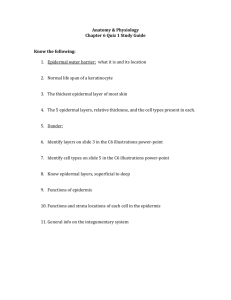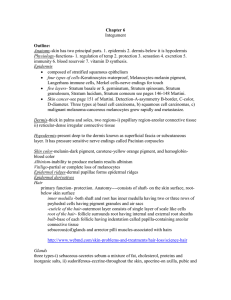Anatomy 10 Exam 2 Study Guide: Tissues & Integument
advertisement
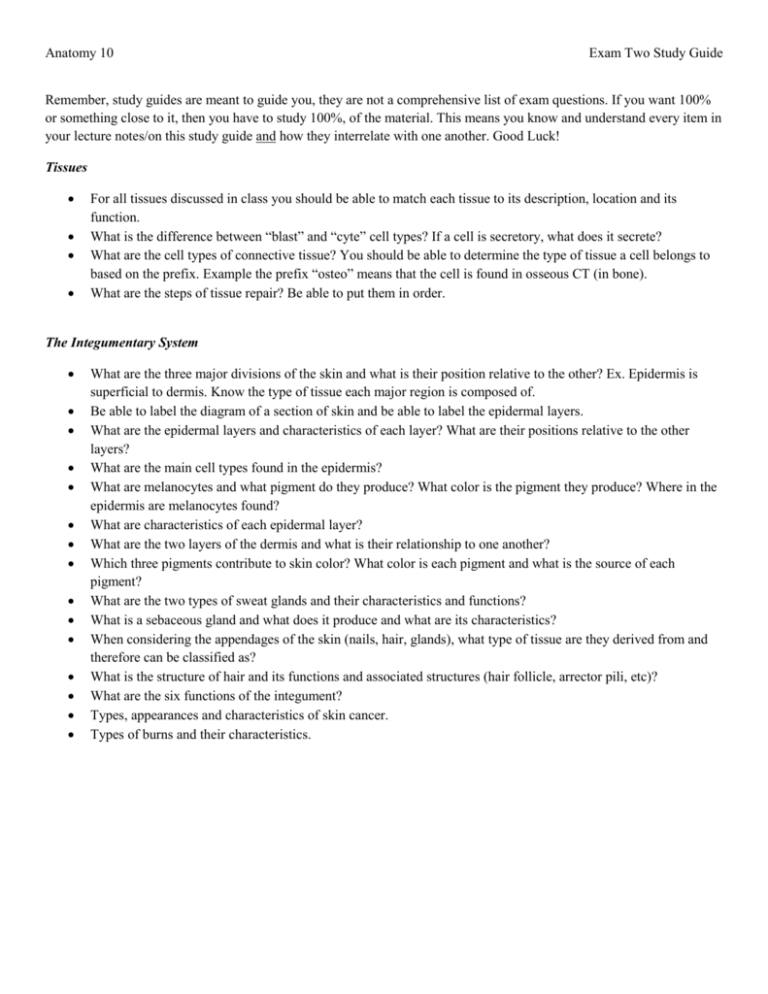
Anatomy 10 Exam Two Study Guide Remember, study guides are meant to guide you, they are not a comprehensive list of exam questions. If you want 100% or something close to it, then you have to study 100%, of the material. This means you know and understand every item in your lecture notes/on this study guide and how they interrelate with one another. Good Luck! Tissues For all tissues discussed in class you should be able to match each tissue to its description, location and its function. What is the difference between “blast” and “cyte” cell types? If a cell is secretory, what does it secrete? What are the cell types of connective tissue? You should be able to determine the type of tissue a cell belongs to based on the prefix. Example the prefix “osteo” means that the cell is found in osseous CT (in bone). What are the steps of tissue repair? Be able to put them in order. The Integumentary System What are the three major divisions of the skin and what is their position relative to the other? Ex. Epidermis is superficial to dermis. Know the type of tissue each major region is composed of. Be able to label the diagram of a section of skin and be able to label the epidermal layers. What are the epidermal layers and characteristics of each layer? What are their positions relative to the other layers? What are the main cell types found in the epidermis? What are melanocytes and what pigment do they produce? What color is the pigment they produce? Where in the epidermis are melanocytes found? What are characteristics of each epidermal layer? What are the two layers of the dermis and what is their relationship to one another? Which three pigments contribute to skin color? What color is each pigment and what is the source of each pigment? What are the two types of sweat glands and their characteristics and functions? What is a sebaceous gland and what does it produce and what are its characteristics? When considering the appendages of the skin (nails, hair, glands), what type of tissue are they derived from and therefore can be classified as? What is the structure of hair and its functions and associated structures (hair follicle, arrector pili, etc)? What are the six functions of the integument? Types, appearances and characteristics of skin cancer. Types of burns and their characteristics.

